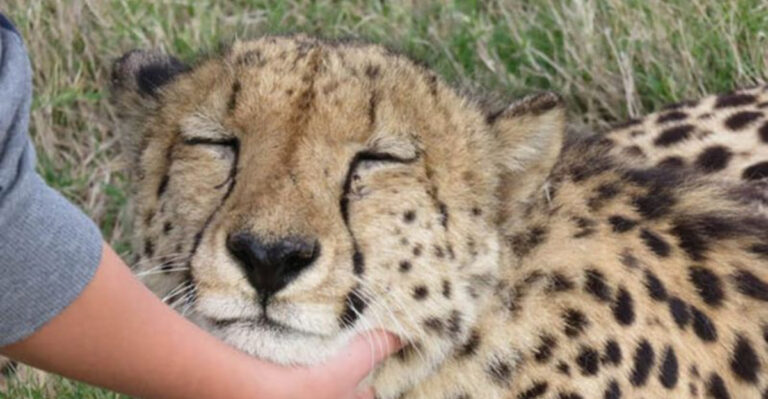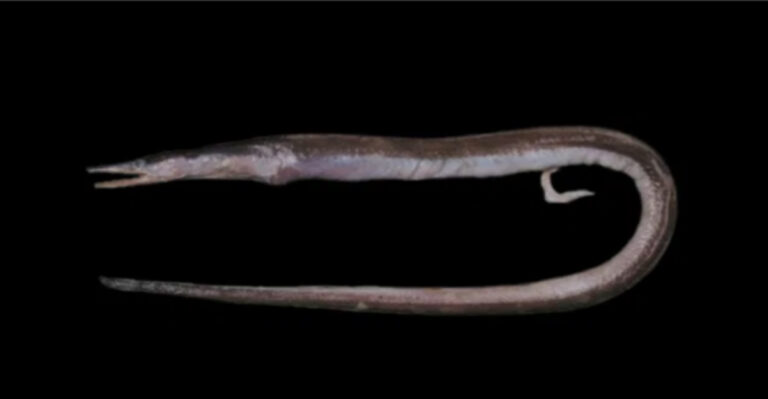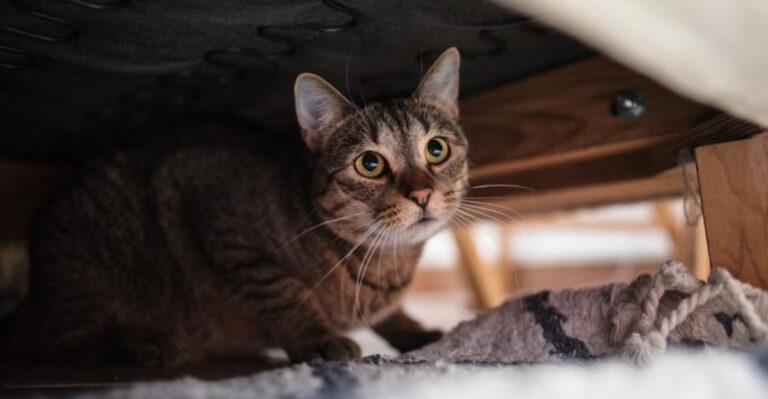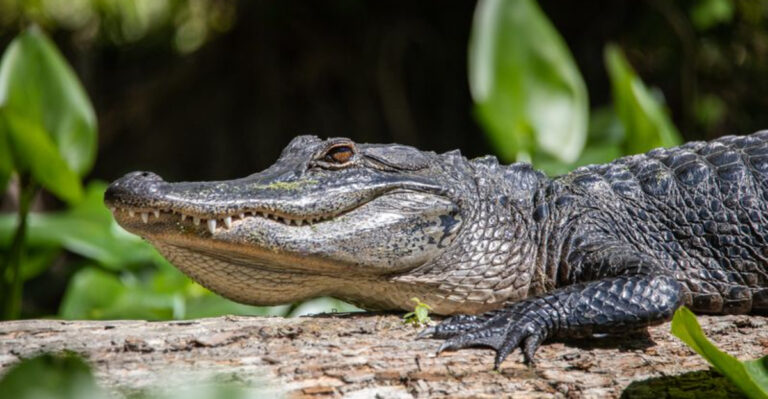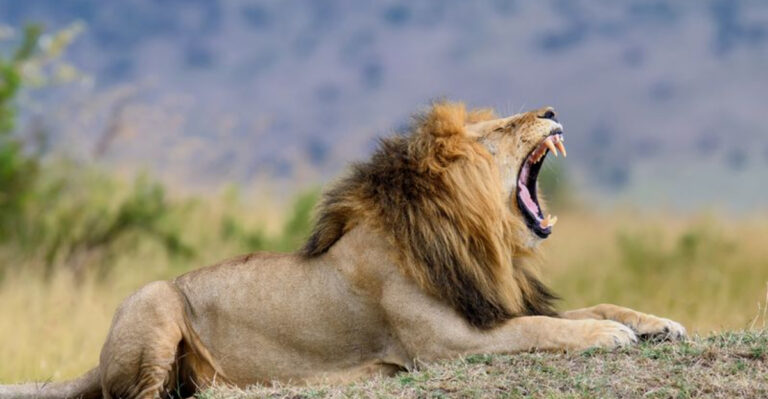16 Surprising Things You Didn’t Know About Praying Mantises
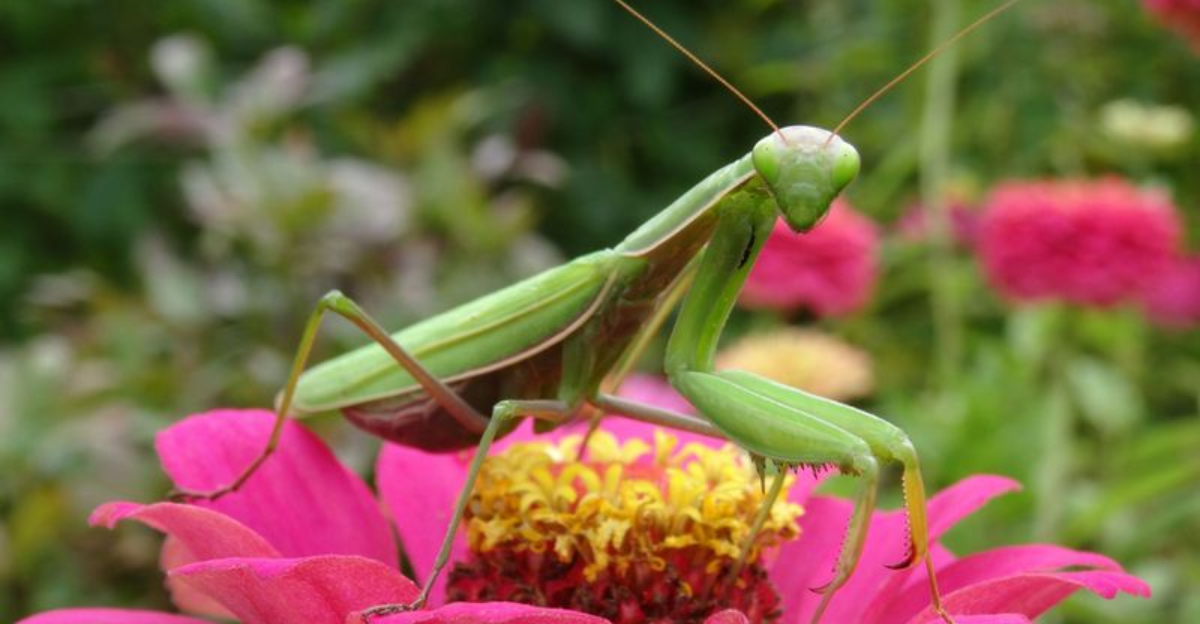
Praying mantises are fascinating creatures that often lurk in the shadows of gardens. Known for their unique stance and lightning-fast reflexes, these insects captivate anyone who takes a closer look.
Beyond their appearance lies a world of surprising behaviors and traits that make them stand out in the insect kingdom.
1. Cannibalistic Tendencies
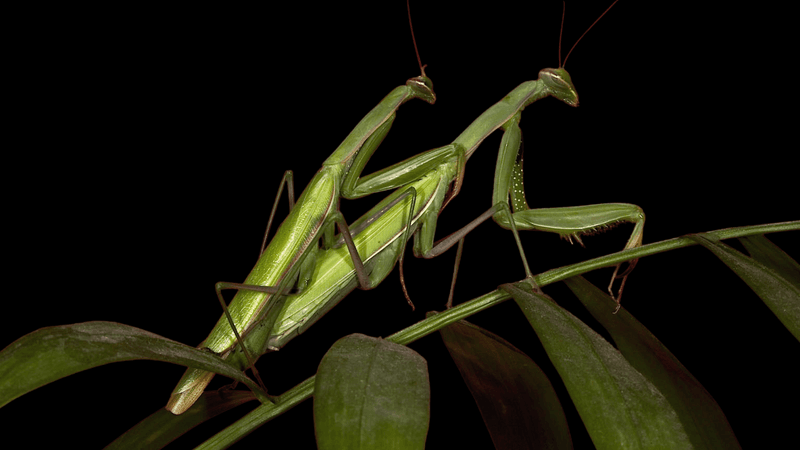
A female praying mantis might send shivers down your spine during mating season. She has a notorious reputation for consuming her mate, either during or after the love affair.
This eerie behavior, known as sexual cannibalism, fascinates scientists and horror movie fans alike.
While it might seem gruesome, some studies suggest that this act provides nutritional benefits that enhance the female’s reproductive success.
Though not all encounters result in a meal, male mantises often approach with caution.
2. Exceptional Vision
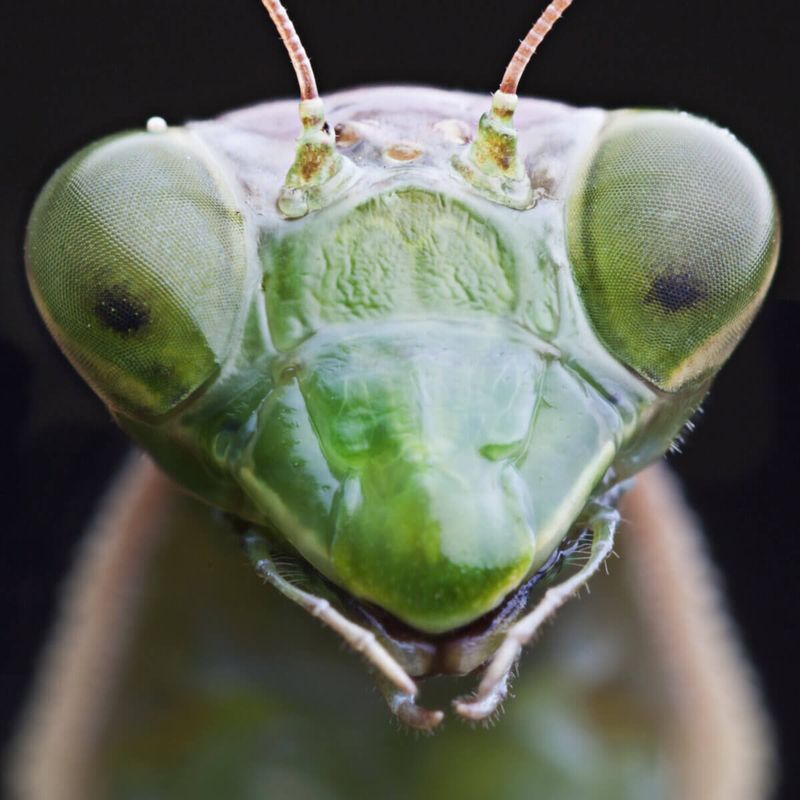
Ever wondered how a praying mantis perceives the world? These insects boast compound eyes paired with additional simple eyes, offering exceptional vision.
This eye arrangement grants them impressive depth perception, crucial for detecting and capturing prey. Whether hunting during the day or embracing the nightlife, their keen eyesight remains unparalleled.
The mantis’s ability to focus on moving objects with such precision makes it a remarkable predator. You’ll find its gaze both mesmerizing and slightly intimidating.
3. Impressive Hunting Techniques
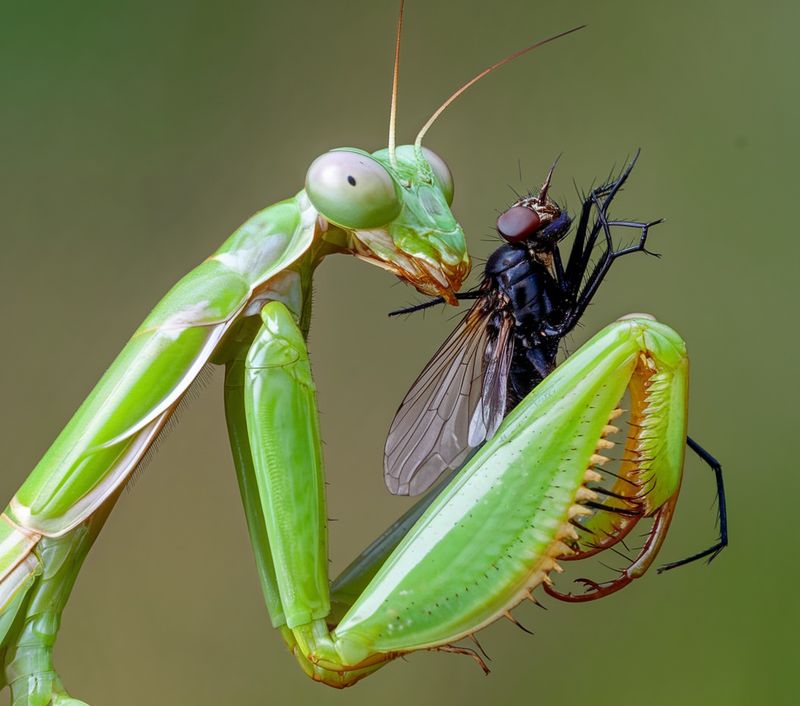
Praying mantises are the ninjas of the insect world. As ambush predators, they rely on stealth and speed to capture their prey.
Their hunting strategy involves staying perfectly still, blending into their surroundings until the perfect moment strikes.
When the time comes, they lunge at incredible speeds, surprising even the most vigilant insects. This incredible precision and timing highlight their impressive hunting prowess.
You might just think twice before assuming these insects are merely passive observers of their environment.
4. Diverse Species
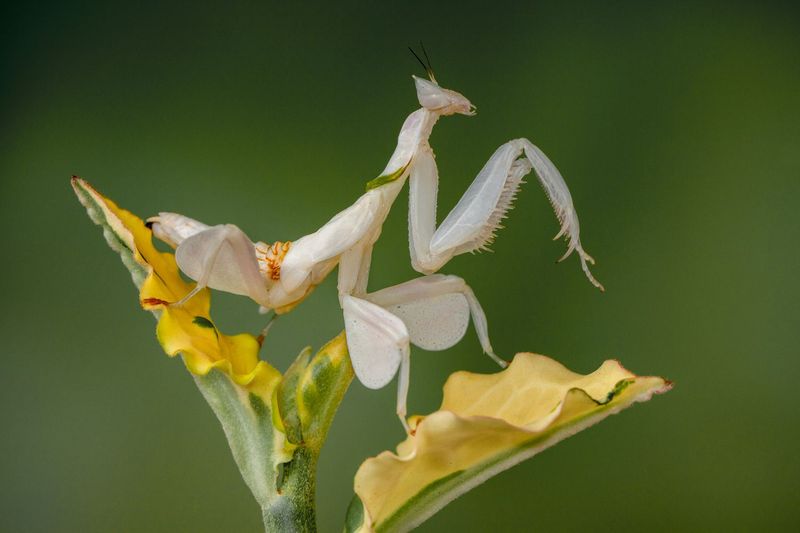
It’s a diverse world when it comes to praying mantises. With over 2,400 species spread across the globe, these insects come in all shapes, sizes, and colors.
Some are tiny enough to fit on a fingertip, while others stretch over six inches long. Their coloration ranges from vibrant greens to subtle earth tones, allowing them to adapt to various environments.
This remarkable diversity not only aids in their survival but also ensures there’s always more to discover about these captivating creatures.
5. Life Cycle And Reproduction
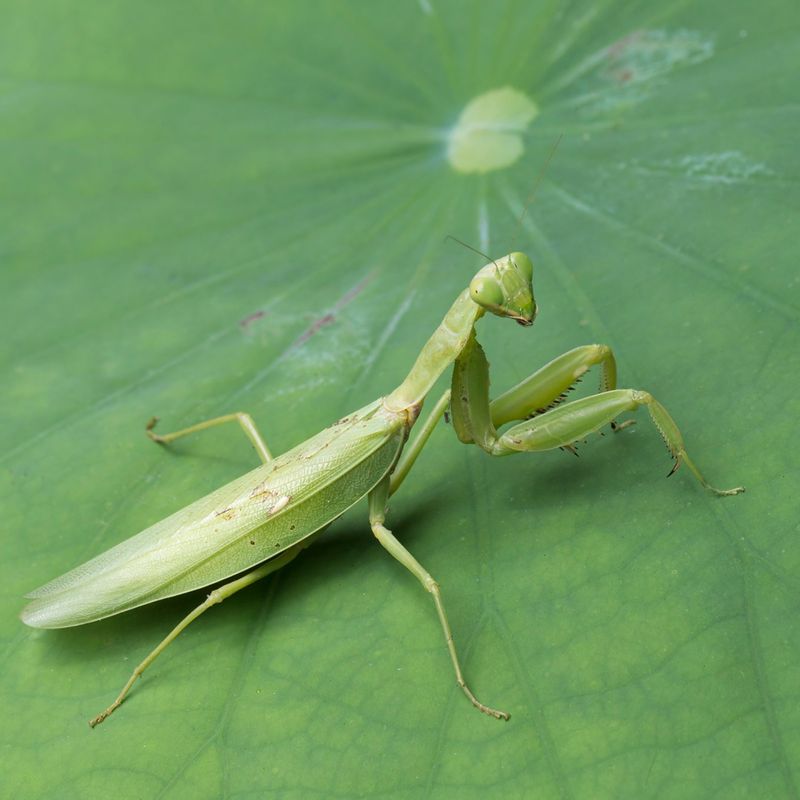
The life cycle of a praying mantis is a journey of transformation. Unlike butterflies, these insects undergo incomplete metamorphosis.
They hatch as nymphs, resembling smaller versions of adults, and gradually grow through molts. This process continues until they reach their mature form, capable of reproduction.
Along the way, they learn to hunt and survive independently. The transition from nymph to adult is both gradual and fascinating, providing a glimpse into the resilience and adaptability of these insects.
6. Flight Capabilities
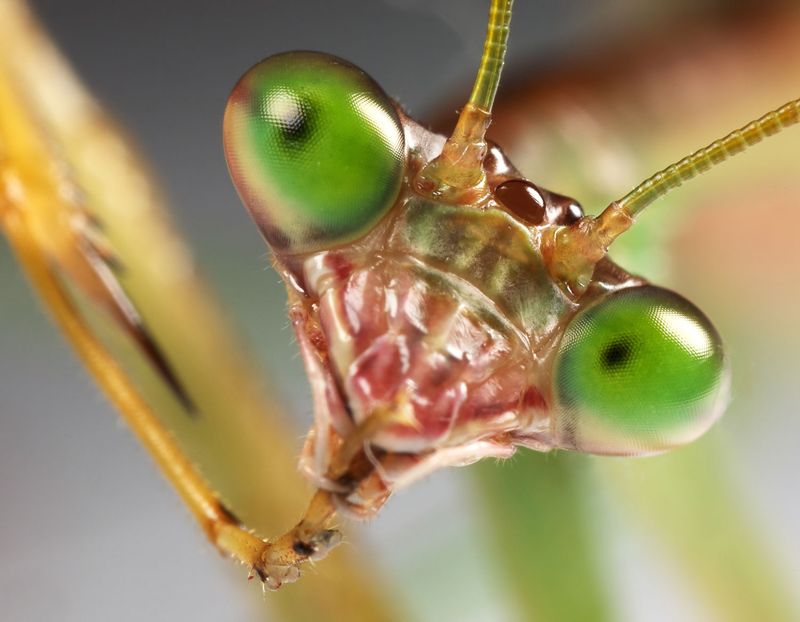
Praying mantises have more than just ground skills. Some species are equipped with wings, allowing them to take short flights.
This ability comes in handy when searching for a mate or evading predators. Their flights are graceful yet brief, adding an element of surprise to their already impressive skill set.
While not all mantises take to the skies, those that do demonstrate a captivating blend of agility and precision. Their aerial acrobatics add another dimension to their intriguing behaviors.
7. Nighttime Predators
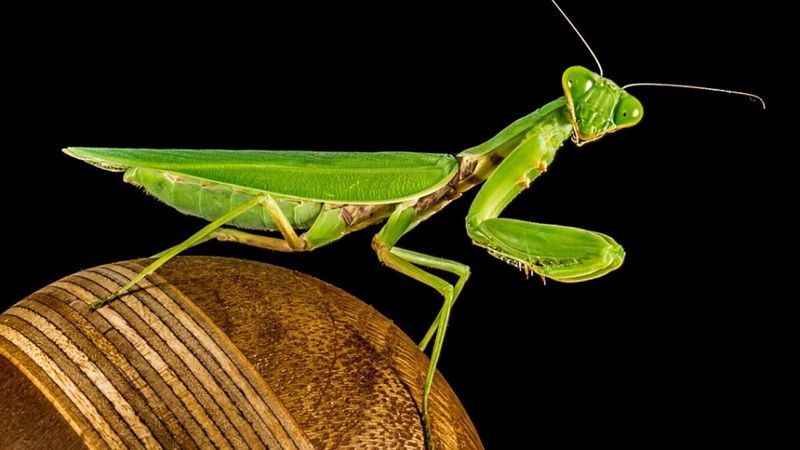
When the sun sets, not all creatures retreat to rest—praying mantises among them. Many species of mantises are active nighttime hunters, leveraging their exceptional vision and camouflage tactics in the dark.
This nocturnal predation allows them to catch unsuspecting insects under the cover of darkness. Their ability to adapt to night hunting showcases their versatility and enhances their effectiveness as predators.
Next time you hear rustling in the night, it might just be a mantis on the prowl.
8. Ancient Predators
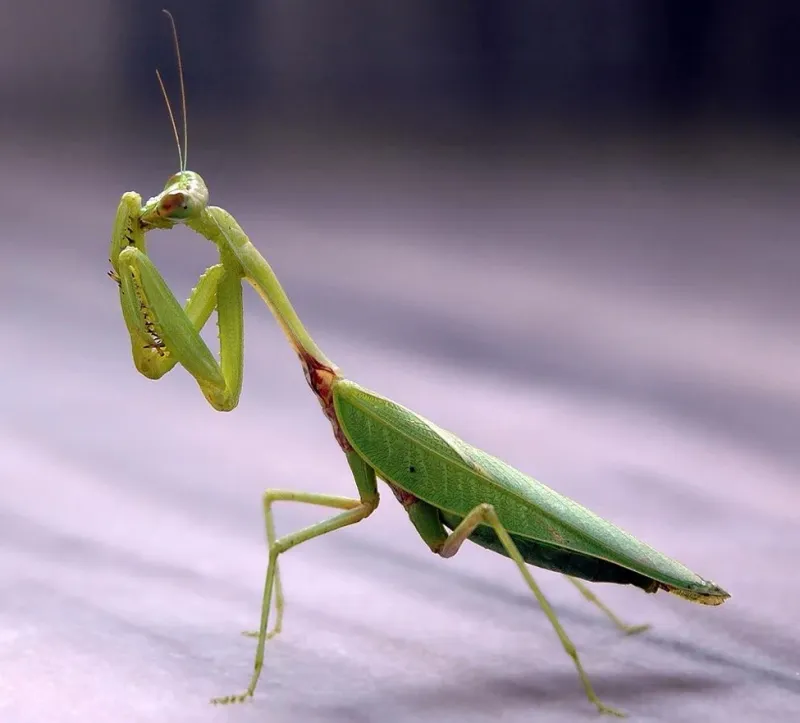
Praying mantises have been around since the time of the dinosaurs. With a history stretching back over 135 million years, they have evolved into highly successful predators.
Their ancient lineage speaks to their adaptability and survival prowess. As nature’s silent hunters, these insects have stood the test of time, refining their skills and characteristics.
Their persistence through eons is a testament to their enduring nature and their role in the tapestry of life on Earth.
9. Color Variations
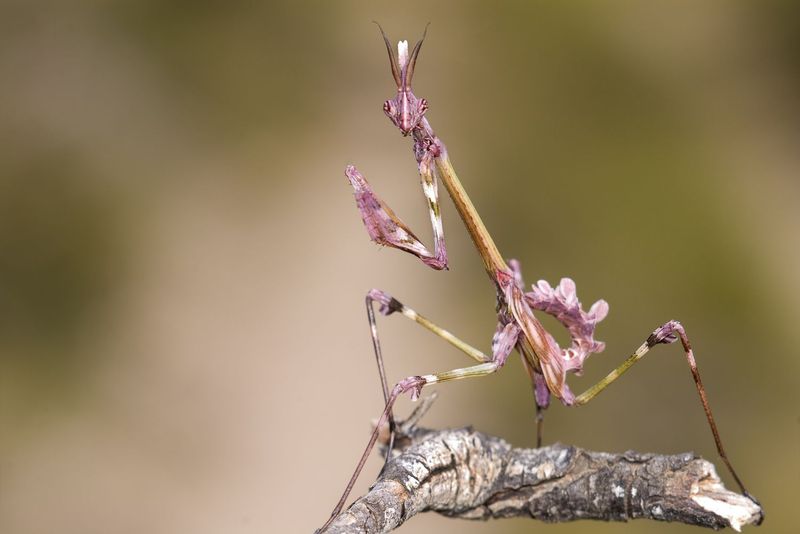
In the world of mantises, color isn’t just for show—it’s a survival strategy.
These insects display an impressive range of colors, from vibrant hues to muted shades, each serving to blend in with their environment.
Some species can even change their color to match their surroundings, further enhancing their camouflage.
This ability to adapt their appearance ensures they remain hidden from predators while stalking their own prey. It’s a colorful reminder of nature’s ingenuity at work.
10. Masters Of Camouflage
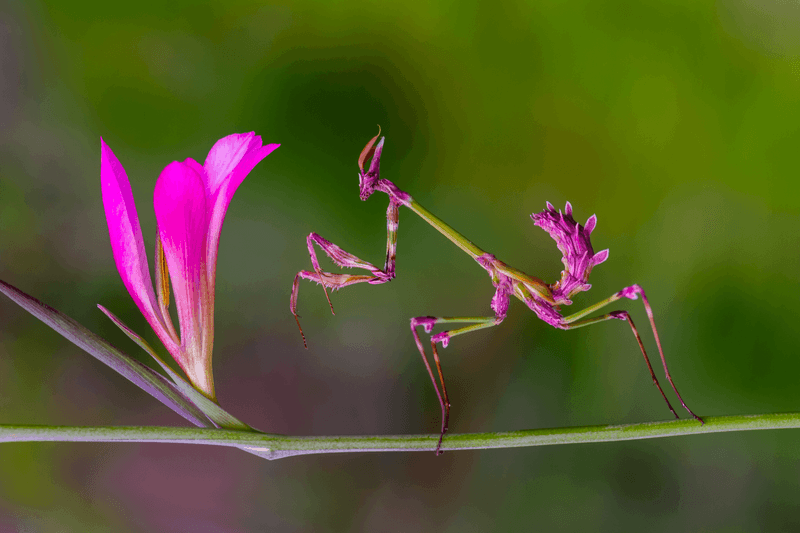
Blending seamlessly into their surroundings is a specialty of the praying mantis. Their bodies are designed to mimic leaves, twigs, and flowers, making them masters of camouflage.
This ability allows them to ambush prey with ease and avoid detection by predators. Whether in a lush forest or a sparse garden, their disguise remains effective.
Their chameleon-like prowess highlights the intricate balance of predator and prey in the natural world, offering a lesson in the art of deception.
11. Communication Through Movements
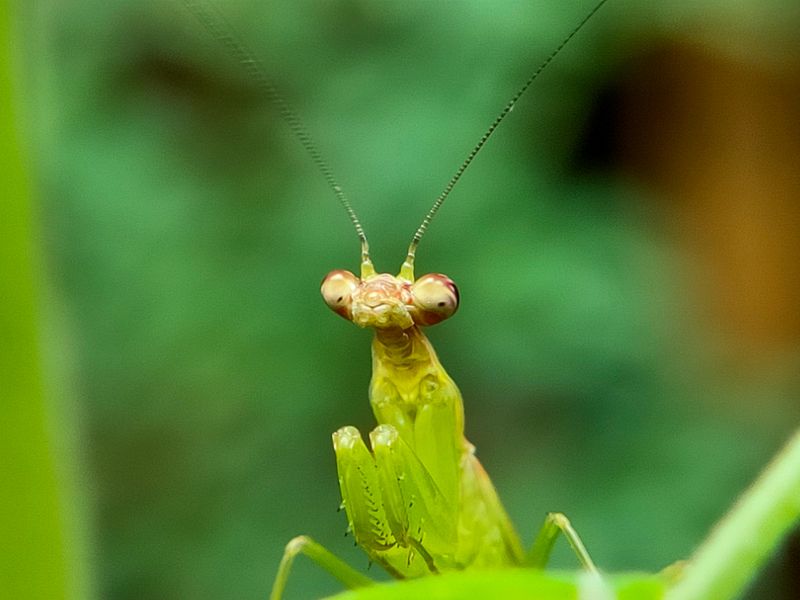
Silent yet expressive, praying mantises communicate through a dance of movements. Without vocal cords, they rely on body language to convey messages.
Head tilts, arm gestures, and positioning form a complex language of their own. These movements can signal threats, courtship, or even curiosity.
Observing a mantis’s silent communication offers insight into their social interactions, revealing a world where actions truly speak louder than words. It’s a reminder that sometimes, silence conveys volumes.
12. Unique Head Mobility
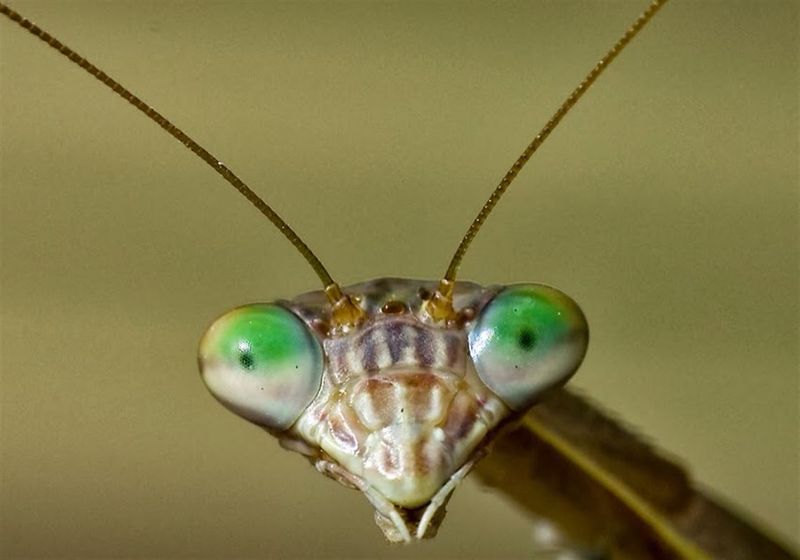
If you’ve ever been stared down by a praying mantis, you might have noticed their head-turning capability. These insects can rotate their heads up to 180 degrees, giving them a wide field of vision.
This unique mobility aids in their hunting strategy, allowing them to scan their surroundings with precision. The ability to look over their shoulder without moving their body adds to their predatory efficiency.
It’s a skill that leaves other insects green with envy.
13. Beneficial Garden Predators
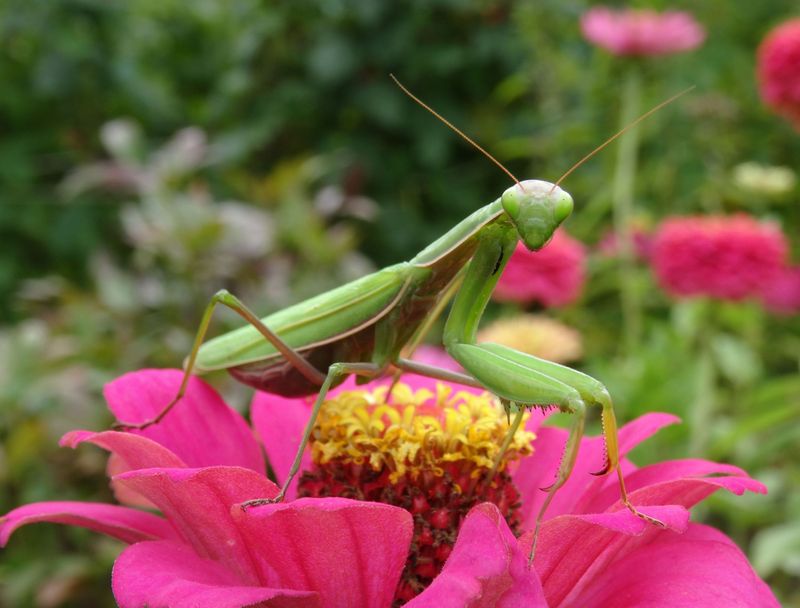
When it comes to keeping gardens pest-free, mantises are your silent allies. These natural predators feed on a variety of garden pests, reducing the need for chemical interventions.
Their presence in a garden signifies a balanced ecosystem, where nature manages its own. By preying on harmful insects, mantises play a key role in maintaining plant health.
Gardeners can appreciate their contribution to a flourishing garden, where every leaf and petal thrives under their watchful gaze.
14. Unique Egg Cases
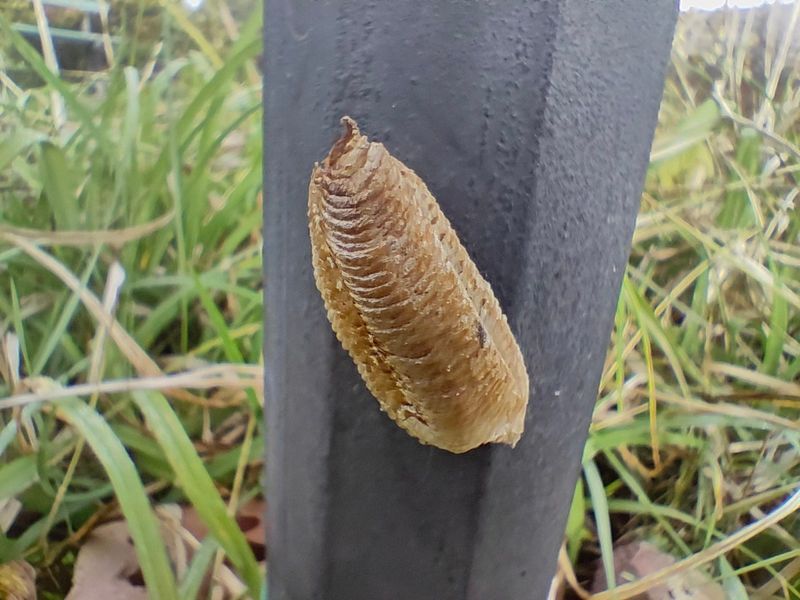
Praying mantises have a unique approach to safeguarding their offspring. They lay egg cases, known as oothecae, that protect the developing embryos.
Each ootheca can hold up to 400 eggs, serving as a fortress against environmental threats. These cases are often attached to branches or leaves, blending seamlessly with their surroundings.
This protective strategy ensures the next generation of mantises emerges strong and ready to continue the cycle of life. It’s a testament to nature’s intricate planning.
15. Varied Diet
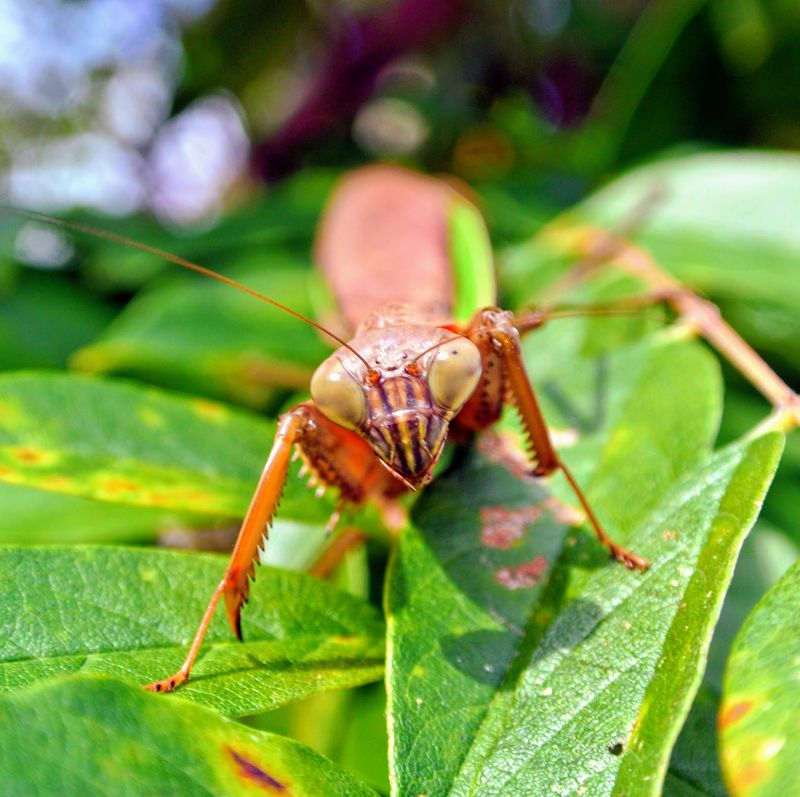
Praying mantises boast a diverse palate that would make any foodie envious. Their diet isn’t limited to insects; they also consume small vertebrates like frogs, lizards, and even birds.
This varied diet showcases their adaptability and hunting prowess. Their ability to tackle prey larger than themselves highlights their strength and resourcefulness.
For mantises, the world is a buffet waiting to be explored, and every meal is an opportunity to demonstrate their predatory skills.
16. Conservation And Threats
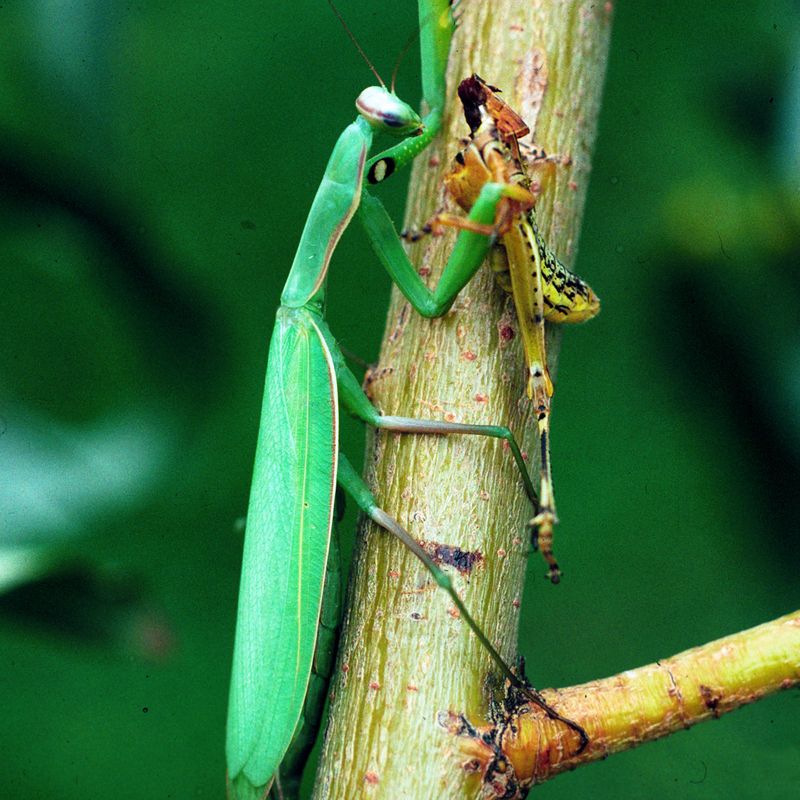
While praying mantises aren’t currently endangered, they face several threats that could impact their future.
Habitat destruction, climate change, and pesticide use pose significant risks to their populations.
Conservation efforts are critical to preserving their habitats and ensuring their survival. By supporting initiatives that protect these insects, we contribute to biodiversity and the ecological balance they help maintain.
Their survival is not just about preserving an insect, but about sustaining the intricate web of life they are part of.


